Crossbreeding vs Backcrossing: Best Methods for Creating THCA Strains
The art and science of cannabis breeding have evolved dramatically over the past decades, with breeders developing increasingly sophisticated techniques to create strains with specific cannabinoid profiles. For those focused on developing high-THCA varieties, understanding the fundamental differences between crossbreeding THCA strains and backcrossing methods is essential for achieving breeding goals efficiently and effectively.
Whether you're a commercial breeder looking to develop the next market-leading cultivar or a passionate hobbyist seeking to create unique genetics, choosing the right breeding methodology can mean the difference between success and disappointment. This comprehensive guide explores the primary THCA breeding methods, their applications, advantages, and limitations to help you make informed decisions about your breeding program.
Understanding Cannabis Breeding Fundamentals
Before diving into specific techniques, it's crucial to understand that no single breeding method reigns supreme. Each approach—crossbreeding, backcrossing, and outcrossing—serves distinct purposes and excels in different scenarios. The "best" method depends entirely on your objectives: Are you seeking to combine desirable traits from different parents? Stabilize an elite phenotype? Introduce genetic diversity? Or refine a specific characteristic like THCA content?
Modern cannabis breeding for THCA production requires both art and science. Breeders must understand Mendelian genetics, quantitative trait inheritance, and how cannabinoid production is influenced by multiple genes working in concert. The complexity of THCA strain development methods means that patience, observation, and systematic record-keeping are just as important as understanding the technical aspects of each breeding technique.
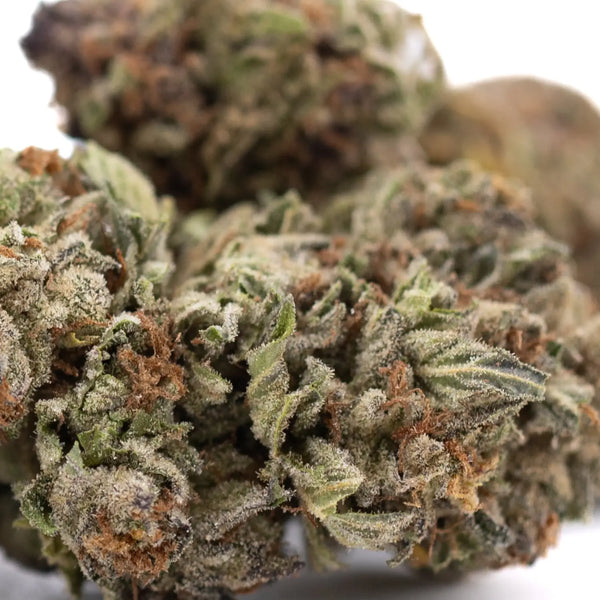
Crossbreeding Explained: Creating New Genetic Combinations
Cannabis crossbreeding THCA represents the foundation of modern strain development. This technique involves breeding two distinct parent plants—often from different genetic lineages—to create F1 (first filial generation) offspring that combine characteristics from both parents.
The Power of Hybrid Vigor
One of the most compelling advantages of crossbreeding is heterosis, commonly known as hybrid vigor. When you cross genetically diverse parents, the F1 generation often displays enhanced growth characteristics, increased yield, better stress resistance, and sometimes elevated cannabinoid production compared to either parent. This phenomenon occurs because the offspring inherit beneficial dominant alleles from both parents while masking recessive deleterious alleles.
For THCA production specifically, crossbreeding allows breeders to combine high-THCA genetics with other desirable traits such as pest resistance, faster flowering times, or superior terpene profiles. The result is hybrid THCA strains that offer well-rounded performance rather than excelling in just one area.
Creating Novel Trait Combinations
Crossbreeding shines when your goal is innovation and exploring new genetic possibilities. By selecting parent plants with complementary strengths, breeders can create offspring with entirely new combinations of traits. For instance, crossing a high-THCA strain with exceptional potency but mediocre yields with a moderate-THCA strain that produces abundantly could yield offspring that maintain strong THCA levels while significantly improving production capacity.
The trade-off with crossbreeding is unpredictability. F1 offspring generally show uniformity due to heterozygosity, but when these F1 plants are crossed to create an F2 generation, genetic segregation occurs. Traits begin segregating according to Mendelian ratios, resulting in considerable variation among offspring. This variability can be advantageous for pheno hunting—searching through populations to find exceptional individuals—but challenging when consistency is required.
Strategic Applications of Crossbreeding
Crossbreeding works best when:
- Introducing new traits: You want to incorporate characteristics absent in your current genetic library
- Exploring genetic diversity: You're searching for novel combinations that might produce unexpected excellence
- Starting new breeding projects: You're establishing foundation stock for subsequent selection and stabilization
- Overcoming genetic limitations: Your current line has reached a plateau, and introducing new genetics could provide a breakthrough
Practical Crossbreeding Examples for High THCA
Consider crossing a high-THCA OG Kush variety (known for potency but temperamental growth) with a hardy, easy-to-grow Haze strain (moderate THCA but excellent vigor). The resulting breeding techniques high THCA offspring might display:
- 50-70% of plants with THCA levels between both parents
- 10-20% potentially exceeding the high-THCA parent
- Improved growth characteristics from the Haze genetics
- Novel terpene profiles combining both lineages
Another strategic cross might involve combining a high-THCA indoor strain with outdoor-adapted genetics to create cultivars suitable for greenhouse or outdoor production while maintaining cannabinoid potency. These THCA breeding methods expand the commercial viability of high-THCA genetics beyond controlled indoor environments.
Backcrossing Explained: Preserving and Amplifying Elite Traits
While crossbreeding explores new genetic territory, backcrossing THCA cannabis focuses on preservation and refinement. This technique involves breeding an offspring back to one of its parents (or a genetically similar individual) to increase the frequency of desired traits while maintaining the overall genetic identity of the parent line.
The Backcrossing Process: BX1, BX2, BX3, and Beyond
The BX breeding THCA process follows a systematic progression:
BX1 (First Backcross): An F1 offspring is crossed back to one parent (usually the one with the most desirable traits). This first backcross increases genetic similarity to the recurrent parent to approximately 75%.
BX2 (Second Backcross): A selected BX1 offspring is again crossed to the same parent, increasing genetic similarity to roughly 87.5%.
BX3 (Third Backcross): Continuing the pattern, genetic similarity reaches approximately 93.75% to the recurrent parent.
BX4 and beyond: Each subsequent backcross further increases genetic similarity, asymptotically approaching 100% while theoretically never quite reaching it.
Preserving Specific Traits Through Backcrossing
The primary strength of backcross THCA genetics lies in trait fixation and preservation. Imagine you've discovered an exceptional female plant producing 30% THCA with a unique terpene profile that customers love. Unfortunately, you can't preserve her through cloning indefinitely due to genetic drift, pathogen accumulation, or scaling limitations.
Backcrossing offers a solution. By crossing this elite female with a male that shares some genetic background, then backcrossing the best offspring repeatedly to the original female (or her clones), you progressively increase the percentage of her genetics in the population. With each backcross generation, more offspring will express traits similar to the elite mother.
Increasing Trait Frequency and Uniformity
Beyond preservation, backcrossing increases the frequency of desired alleles in your breeding population. If your elite parent has rare or recessive traits contributing to high THCA production, these become more common with each backcross generation. By BX3 or BX4, a significant percentage of offspring will display traits similar to the recurrent parent, creating more uniform populations—exactly what commercial growers need.
The key to successful backcrossing is rigorous selection at each generation. Simply backcrossing without carefully selecting the best individuals for the next generation won't achieve your goals and may even result in inbreeding depression. Choose backcross offspring that not only resemble the recurrent parent in desired traits but also show vigor, health, and productivity.
Maintaining Elite Characteristics Across Generations
When crossbreeding THCA strains creates exceptional individuals, backcrossing becomes the tool for making those exceptional traits reproducible. This is particularly valuable in commercial cultivation where consistency matters tremendously. Customers who fall in love with a particular THCA strain expect similar experiences with future purchases. Backcrossing helps deliver that consistency by stabilizing the genetic basis of desirable traits.
However, backcrossing has limitations. While it preserves the recurrent parent's traits, it progressively narrows genetic diversity. After multiple backcross generations, you essentially have plants that are near-clones of the original parent, which means limited potential for further improvement through selection within that line. This is where alternative techniques become necessary.
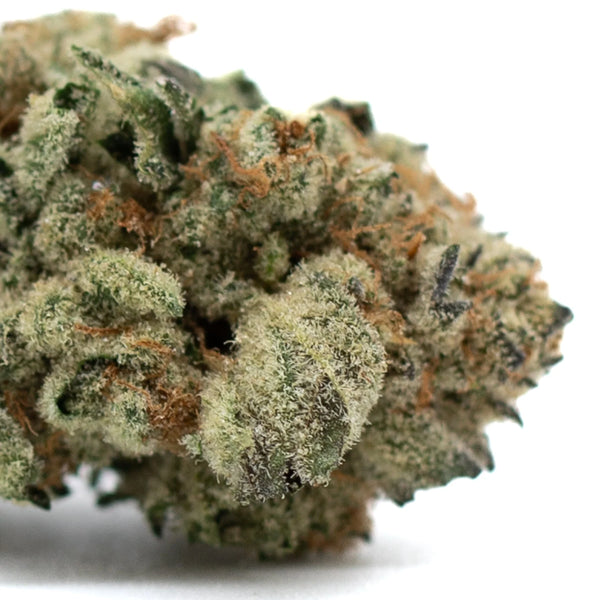
Outcrossing: Introducing Fresh Genetics and Avoiding Inbreeding Depression
Outcrossing THCA plants involves breeding individuals from different genetic backgrounds with no recent common ancestry. This technique serves as the counterbalance to backcrossing's genetic narrowing, introducing genetic diversity and hybrid vigor while mitigating inbreeding depression.
Why Outcrossing Matters
After several generations of backcrossing or inbreeding, cannabis populations can suffer from reduced vigor, decreased yields, increased hermaphroditism, and diminished stress tolerance—collectively known as inbreeding depression. These problems arise because repeatedly breeding related individuals increases homozygosity, allowing deleterious recessive alleles to be expressed.
Outcrossing reverses this trend by introducing heterozygosity. When you cross your backcrossed line with an unrelated strain, the offspring gain genetic diversity that often translates to improved health and productivity. For THCA breeding specifically, outcrossing can introduce:
- New biosynthetic pathways that might enhance cannabinoid production
- Improved terpene profiles from different genetic backgrounds
- Better stress response and environmental adaptability
- Enhanced pest and disease resistance
Strategic Outcrossing in Breeding Programs
Smart breeders use outcrossing strategically within longer-term breeding programs. After stabilizing desired traits through backcrossing, introducing carefully selected outcross genetics can provide new genetic variation to work with while maintaining the core characteristics you've developed.
For example, if you've backcrossed to stabilize a high-THCA strain but noticed yields declining, outcrossing to a high-yielding variety from a different genetic background could restore productivity while potentially maintaining THCA levels through subsequent selection. The key is choosing outcross partners that complement your line's weaknesses without compromising its strengths.
The Cubing Method: Advanced Backcrossing for Uniformity
Cubing represents a specialized THCA strain development method that takes backcrossing to its logical extreme. Developed and popularized by cannabis breeder Vic High, cubing involves backcrossing a plant to itself (or clones of itself) repeatedly to create offspring that are essentially genetic duplicates of the original.
How Cubing Works
The cubing process follows this general pattern:
- P1: Start with an elite female plant (your desired clone)
- Cube 1 (C1): Cross P1 with a male sharing some genetic background, creating F1 offspring
- Cube 2 (C2): Select the best F1 male and cross back to P1 (the original mother)
- Cube 3 (C3): Select the best C2 male and cross again to P1
- Cube 4 (C4): Continue if further uniformity is needed
By Cube 3 or 4, the resulting seeds produce plants remarkably similar to the original P1 mother in appearance, cannabinoid profile, terpenes, and growth characteristics. This technique is particularly valuable when you have a special cut that you want to reproduce in seed form, making it accessible to growers who prefer seeds over clones.
Advantages and Challenges of Cubing
Cubing offers unparalleled uniformity, making it ideal for commercial seed production where customers expect consistency. However, it requires maintaining the original mother plant throughout the entire breeding process (often several years), and like all intensive backcrossing, it can lead to reduced vigor if not managed carefully.
For breeding techniques high THCA, cubing allows you to essentially bottle an exceptional THCA-producing phenotype in seed form. Growers purchasing these cubed seeds can expect a high percentage of offspring to closely resemble the elite parent, reducing the pheno-hunting process significantly.
Method Selection Guide: Matching Breeding Techniques to Your Goals
Choosing the right approach for THCA breeding methods requires clarity about your objectives:
Choose Crossbreeding When You Want To:
- Create novel genetic combinations
- Introduce new traits into your line
- Explore diverse phenotypes for selection
- Overcome genetic limitations in current stock
- Start a new breeding project from scratch
- Capitalize on hybrid vigor
Choose Backcrossing When You Want To:
- Preserve an exceptional phenotype in seed form
- Stabilize specific desirable traits
- Increase trait uniformity across a population
- Maintain elite characteristics while improving one aspect
- Create seeds that reliably reproduce a favorite clone
Choose Outcrossing When You Want To:
- Reverse inbreeding depression
- Introduce genetic diversity
- Improve overall plant vigor
- Add new traits while maintaining core characteristics
- Prevent genetic stagnation in long-term programs
Choose Cubing When You Want To:
- Create seeds virtually identical to an elite mother
- Achieve maximum uniformity in offspring
- Reproduce a specific clone in seed form
- Develop a commercial seed line with minimal variation
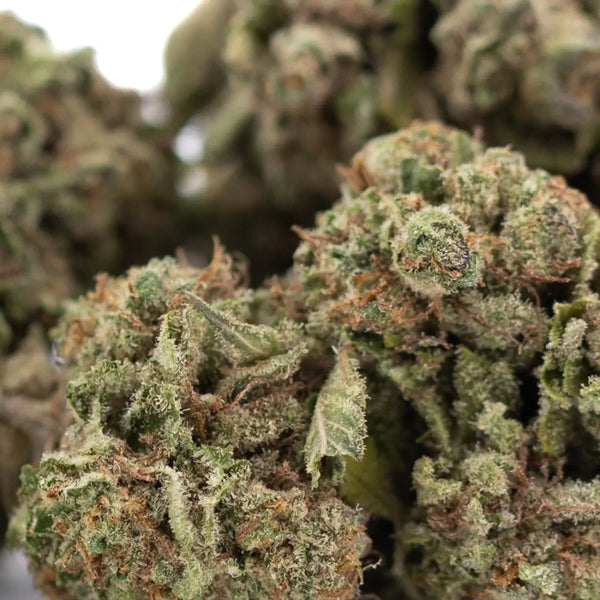
Case Studies: Successful Strains Using Each Method
Crossbreeding Success: Girl Scout Cookies
Girl Scout Cookies (GSC) exemplifies successful cannabis crossbreeding THCA. Created by crossing OG Kush (already known for high THCA) with Durban Poison (offering unique terpenes and growth characteristics), GSC combined the potency of OG genetics with the vigor and distinctive flavor profile of Durban. The result became one of the most popular strains worldwide, producing impressive THCA levels (often 25-28%) alongside a memorable terpene profile.
The GSC story demonstrates how strategic crossbreeding can create something greater than the sum of its parts. Neither parent achieved the fame and commercial success of their offspring, proving that thoughtful genetic combinations can yield revolutionary results.
Backcrossing Success: BC Bud Depot's BC God Bud
BC God Bud represents a masterclass in backcross THCA genetics. Developed by BC Bud Depot through careful backcrossing to preserve the traits of the original God Bud clone, this strain maintains the distinctive purple coloration, fruity aroma, and high THCA content (typically 22-27%) of its predecessor while being available in stable seed form.
The breeders used multiple backcross generations to ensure that seeds consistently produced plants matching the original clone's characteristics. This approach allowed them to commercialize an elite clone without compromising the traits that made it special.
Outcrossing Success: DJ Short's Blueberry Line
DJ Short's approach to maintaining his famous Blueberry line demonstrates strategic outcrossing. Rather than continuously inbreeding, Short periodically introduces carefully selected genetics from other lines to maintain vigor and prevent the genetic stagnation that could occur from excessive inbreeding. This management strategy has kept Blueberry relevant and productive for decades while maintaining its characteristic flavor, aroma, and THCA production (typically 19-24%).
Cubing Success: Soma's NYC Diesel
Soma Seeds' NYC Diesel shows the cubing method's potential. By repeatedly backcrossing selected males to the original NYC Diesel clone, Soma created seeds that reliably produce the distinctive grapefruit/diesel aroma and solid THCA levels (20-26%) characteristic of the original cut. Growers purchasing these seeds can expect relatively uniform offspring that capture the essence of the legendary clone.
Combining Techniques: Sequential Breeding Strategies
The most sophisticated breeding programs don't rely on a single technique but strategically combine THCA breeding methods in planned sequences. Understanding how to integrate multiple approaches creates opportunities for achieving complex breeding goals that no single method could accomplish alone.
The Crossbreeding-Backcrossing Combination
A common sophisticated strategy begins with crossbreeding to create novel genetic combinations, followed by backcrossing to stabilize desired traits. Here's how this might work:
Years 1-2: Cross a high-THCA strain with a variety possessing complementary characteristics (excellent disease resistance, for example). Grow out the F1 generation and select the best individuals showing both high THCA and good disease resistance.
Years 3-4: Create an F2 generation and grow larger populations to see the full range of genetic segregation. Identify outstanding individuals that combine your target traits.
Years 5-7: Begin backcrossing your best F2 selections to the high-THCA parent to increase THCA genetics while attempting to retain the disease resistance introduced in the cross. Continue through BX2 and potentially BX3.
Years 8-10: Perform stabilization crosses (breeding selected siblings from the backcross generations) to lock in your desired trait combination while improving uniformity.
This sequential approach allows you to combine the exploratory nature of crossbreeding with the stabilizing power of backcrossing, creating hybrid THCA strains that are both innovative and consistent.
The Backcross-Outcross Cycle
Another effective strategy alternates backcrossing with periodic outcrossing to maintain vigor while refining specific traits:
Phase 1: Backcross your elite plant through BX2 or BX3 to stabilize its characteristics and create a relatively uniform population.
Phase 2: Outcross selected individuals from your backcross line to an unrelated strain chosen to complement any weaknesses that emerged during backcrossing (perhaps reduced yields or vigor).
Phase 3: Select the best offspring from the outcross that maintain your target THCA levels while showing improved vigor.
Phase 4: Resume backcrossing using these vigorous outcross offspring, working toward stabilization again.
This cyclical approach prevents the genetic stagnation that can occur with excessive backcrossing while still allowing you to refine and stabilize desired characteristics over time.
Multi-Line Development
Advanced breeders often develop multiple parallel lines using different techniques, then strategically cross the best individuals from each line. For instance:
- Line A: Focus on maximizing THCA through intensive selection and backcrossing
- Line B: Emphasize terpene profile and bag appeal through different crosses
- Line C: Prioritize yield and ease of cultivation
After several generations of independent development using appropriate THCA strain development methods for each line's goals, the breeder might cross the best individuals from each line, creating offspring that potentially combine elite THCA levels, exceptional terpenes, and superior yields—traits that might be difficult to improve simultaneously within a single line.
Understanding Trait Heritability in THCA Breeding
Successfully applying any breeding techniques high THCA requires understanding that traits vary in heritability—the degree to which offspring resemble their parents for specific characteristics. THCA production appears to have moderate-to-high heritability, meaning genetics play a substantial role, but environmental factors also contribute significantly.
Highly heritable traits respond well to selection and stabilize relatively quickly through backcrossing. Traits with lower heritability require larger populations, more generations, and environmental control to make consistent progress. This is why reputable breeders maintain detailed records of each plant's performance across different environmental conditions—they're gathering data to understand how reliably traits pass to offspring.
For complex traits like overall quality, which depends on multiple factors including THCA levels, terpene profile, growth characteristics, and bag appeal, progress comes more slowly. This is why combining multiple breeding techniques in strategic sequences often works better than relying on any single approach.

The Role of Selection Pressure
Regardless of which breeding method you employ, selection pressure—the rigor with which you choose individuals for the next generation—ultimately determines success. Crossbreeding without strong selection just shuffles genes randomly. Backcrossing without careful selection can fix undesirable traits alongside beneficial ones.
Effective selection for backcrossing THCA cannabis requires:
- Clear criteria: Know exactly what traits you're selecting for before starting
- Adequate population sizes: You can't find exceptional individuals in tiny populations
- Proper evaluation: Test plants under conditions similar to their intended use
- Documentation: Keep detailed records of each plant's performance and lineage
- Patience: Don't rush to the next generation before thoroughly evaluating the current one
Many breeding failures result not from choosing the wrong technique but from insufficient selection pressure. Growing 10 plants and picking the "best" one is far less effective than growing 100 plants and selecting only the top 1-2% for breeding. Larger populations give you better odds of finding truly exceptional individuals and allow stronger selection pressure.
Environmental Factors and Genotype Expression
Even with perfect genetics from your chosen THCA breeding methods, environmental factors dramatically influence THCA production. Temperature, light spectrum and intensity, nutrient availability, water stress, and other growing conditions all affect cannabinoid biosynthesis.
This creates a challenge for breeders: a plant that produces exceptional THCA in one environment might be mediocre in another. The most robust breeding programs evaluate genetics across multiple environments—indoor and outdoor, different nutrient programs, various training techniques—to identify lines that perform consistently well across conditions.
When backcrossing or cubing to preserve an elite phenotype, remember that you're preserving its genetic potential, not guaranteeing identical performance in all environments. The clone you're working to replicate achieved its exceptional THCA levels under specific conditions. Seeds from your breeding program will have the genetic potential to match that performance but will require similar growing conditions to fully express that potential.
Common Mistakes in THCA Breeding Programs
Understanding pitfalls helps you avoid them when implementing breeding techniques high THCA:
Insufficient population sizes: Working with too few individuals limits your selection options and reduces the chance of finding exceptional genetics.
Rushing the process: Breeding takes time. Rushing to the next generation before properly evaluating the current one leads to poor selection decisions.
Neglecting male selection: Many breeders focus intensely on female plants while paying minimal attention to males. Selecting exceptional males is equally important for breeding success.
Ignoring environmental control: Without consistent growing conditions, you can't accurately assess genetic potential versus environmental influence.
Poor record keeping: Without detailed documentation, you lose valuable information about what works and what doesn't.
Single-trait focus: Breeding exclusively for THCA while ignoring yield, vigor, pest resistance, and other important characteristics creates one-dimensional genetics that may not perform well commercially.
Excessive inbreeding: Repeatedly backcrossing or inbreeding without introducing fresh genetics eventually causes inbreeding depression and genetic stagnation.
Future Trends in THCA Breeding
The cannabis breeding industry continues evolving rapidly, with new technologies and approaches enhancing traditional THCA strain development methods:
Marker-assisted selection: DNA markers associated with high THCA production are being identified, allowing breeders to screen young plants for genetic potential before they flower, dramatically speeding breeding programs.
Tissue culture: Preserving elite genetics through tissue culture eliminates the need to maintain large mother plant collections, making cubing and backcrossing programs more manageable.
Genomic selection: As cannabis genome sequencing becomes more affordable, breeders are beginning to use whole-genome data to predict breeding values and make selection decisions.
Environmental optimization: Better understanding of how environmental factors influence THCA biosynthesis allows breeders to create optimal evaluation environments, improving selection accuracy.
These technological advances don't replace fundamental breeding techniques but enhance them, making programs more efficient and precise.
Conclusion: No Single "Best" Method—Match Strategy to Objectives
After exploring the landscape of crossbreeding THCA strains, backcrossing THCA cannabis, outcrossing, and advanced techniques like cubing, one truth emerges: there is no universally "best" breeding method. The optimal approach depends entirely on your specific objectives, resources, timeline, and circumstances.
Crossbreeding excels at creating novel genetic combinations and exploring new possibilities. When you want innovation, diversity, and the potential for breakthrough discoveries, crossbreeding opens doors that other methods cannot. It's the pioneering method, the explorer's tool, perfect for breeders seeking the next generation of exceptional hybrid THCA strains.
Backcrossing and cubing shine when preservation and consistency matter most. When you've discovered something truly exceptional and want to reproduce it reliably, these methods deliver stability and uniformity. For commercial breeders developing seed lines that must perform consistently for customers, BX breeding THCA techniques are invaluable.
Outcrossing serves as the essential tool for maintaining genetic health and vigor in long-term breeding programs. Without periodic infusions of genetic diversity through outcrossing THCA plants, even the most carefully managed lines eventually suffer from inbreeding depression and genetic stagnation.
The most sophisticated and successful breeding programs don't choose one method and stick with it rigidly. Instead, they strategically combine techniques in sequences designed to achieve complex goals that single methods cannot accomplish. They use crossbreeding to create, backcrossing to stabilize, and outcrossing to maintain vigor—each technique applied at the appropriate stage of their breeding strategy.
Success in cannabis crossbreeding THCA ultimately requires more than just choosing the right technique. It demands clear objectives, adequate resources, proper selection pressure, detailed record-keeping, patience, and the wisdom to adapt your approach as you gather information about how your genetics respond to different breeding strategies.
Whether you're developing new cultivars for commercial production or creating unique genetics for personal satisfaction, understanding these fundamental THCA breeding methods empowers you to make informed decisions that align with your goals. The choice between crossbreeding, backcrossing, outcrossing, or combining multiple techniques isn't about finding the "best" method—it's about selecting the right tool for your specific job.
Frequently Asked Questions About THCA Breeding Methods
What's the fastest way to create a stable high-THCA strain?
The fastest approach combines initial crossbreeding of proven high-THCA parents followed by intensive backcrossing to the most potent parent. This typically takes 3-4 years minimum with adequate population sizes and strong selection pressure. However, rushing the process usually compromises quality and stability. Most commercial breeders invest 5-7 years developing truly stable, elite THCA strain development methods.
How many backcross generations do I need to stabilize THCA traits?
Generally, BX3 or BX4 provides sufficient stability for most breeding goals. By BX3, offspring show approximately 93.75% genetic similarity to the recurrent parent, with most individuals expressing the desired traits. However, the exact number depends on the heritability of your target traits, population sizes, and selection pressure. Some traits stabilize by BX2, while others require BX5 or beyond.
Can I use crossbreeding and backcrossing in the same breeding program?
Absolutely—combining techniques often produces the best results. A common strategy involves crossbreeding to create novel combinations, followed by backcrossing to stabilize the best offspring from those crosses. This sequential approach allows you to innovate through crossbreeding while achieving consistency through backcrossing, giving you the advantages of both breeding techniques high THCA.
How do I prevent inbreeding depression in backcross programs?
Start with vigorous, healthy parents and maintain strong selection pressure at each generation, ruthlessly culling weak or compromised individuals. Keep detailed records of plant performance to identify declining vigor early. Consider periodic outcrossing to introduce genetic diversity when you notice reduced vigor, decreased yields, or increased hermaphroditism. Alternating backcrossing with strategic outcrossing creates a sustainable long-term breeding program.
What population size do I need for effective THCA breeding?
Minimum recommendations vary by technique: For F2 selection (after initial crossbreeding), grow at least 50-100 plants to see adequate trait variation. For backcrossing programs, 30-50 individuals per generation provides reasonable selection opportunities. For serious commercial breeding or pheno hunting from hybrid THCA strains, populations of 100-500+ plants allow much stronger selection pressure and better chances of finding exceptional individuals.
How important is male selection in THCA breeding?
Critically important—males contribute 50% of offspring genetics. Select males based on growth vigor, structure, resin production on vegetative growth, terpene content, and most importantly, the performance of their offspring. "Progeny testing" (evaluating a male based on his daughters' performance) is the gold standard for male selection but requires additional time and resources. Many breeding failures result from careful female selection combined with inadequate attention to male selection.
Can I create feminized seeds using these breeding methods?
Yes, crossbreeding THCA strains, backcrossing, and other breeding methods can all be adapted for feminized seed production. The breeding methodology remains the same, but you'll induce male flowers on female plants (typically using colloidal silver or STS) to create the pollen for crosses. This allows you to work exclusively with elite female genetics, though some breeders believe traditional breeding with males maintains greater vigor.
How do I know which breeding method to use for my specific goals?
Start by clearly defining your objectives: If you want to explore new genetic combinations and don't have a specific target trait profile, use crossbreeding. If you have an exceptional phenotype you want to preserve in seed form, use backcrossing or cubing. If you need to reverse declining vigor in an existing line, use outcrossing. For complex goals requiring multiple trait improvements, plan a sequential strategy combining multiple methods. Your timeline, resources, and target market also influence the decision.
What's the difference between backcrossing and cubing?
Both are forms of backcrossing, but cubing specifically involves repeatedly backcrossing to the exact same individual (or its clones) to create offspring that are virtual genetic duplicates of the original. Regular backcrossing might involve crossing back to the parent line more generally (not necessarily the identical individual). Cubing is more intensive and requires maintaining the original mother plant throughout the process but produces maximum uniformity in offspring, making it ideal for backcross THCA genetics that need to closely match an elite clone.
How long does a complete breeding project typically take?
Timelines vary dramatically based on your goals and approach: A simple F1 hybrid from cannabis crossbreeding THCA can be created in one growing season, but offspring won't be stabilized. Stabilizing traits through backcrossing requires 3-5 years minimum. Developing a truly elite commercial line with consistent performance typically takes 5-10 years of dedicated work. Environmental factors (indoor vs. outdoor, number of annual harvests) significantly impact timelines. Indoor breeding with multiple annual generations accelerates programs considerably compared to single annual outdoor harvests.

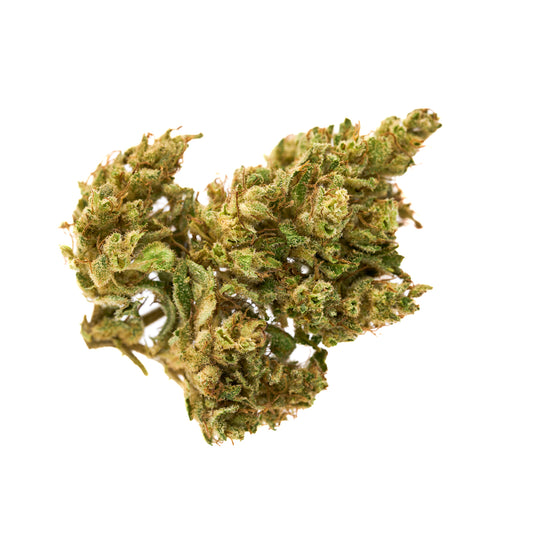
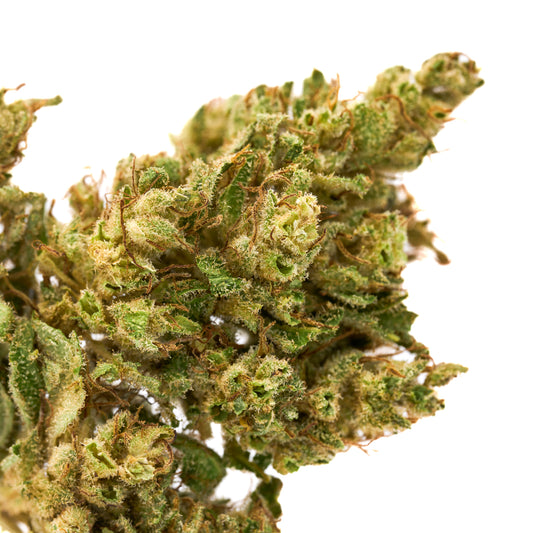

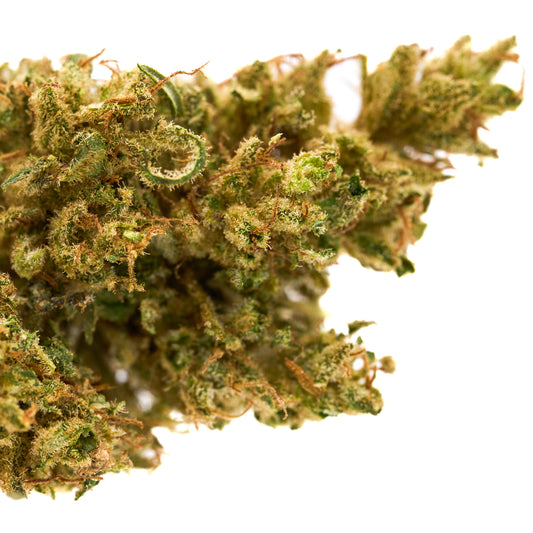

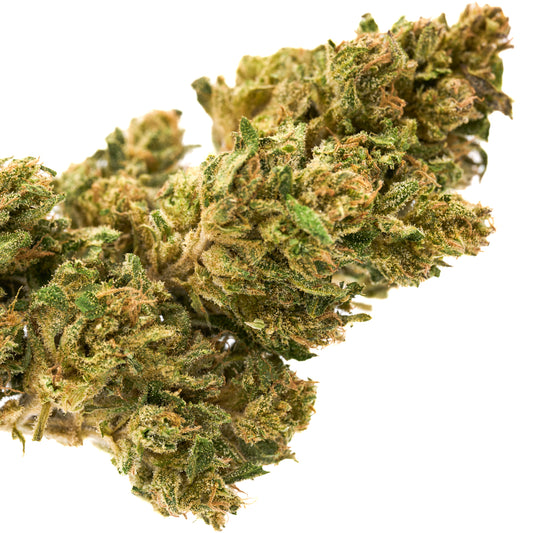





Leave a comment
Please note, comments need to be approved before they are published.